Postponed payment schemes are making an impact in the worlds of fashion and beauty. What could grocery retailers gain – or lose – from getting involved?
Delayed gratification is so last century. Want that new outfit you saw on Instagram, but payday is weeks away? Want the latest gadget, but saving up is a chore? Forget the waiting. You can bypass the tedious stage and have it right here, right now - and it won’t cost you a penny more.
That’s the promise made by a new crop of fintech disruptors shaking up the retail sector with ultra-convenient ‘buy now, pay later’ services. Led by the likes of Klarna, Clearpay and Laybuy, these providers allow shoppers to either delay payment for 30 days or to break purchases down into small instalments, all while incurring zero interest.
It’s a proposition that’s proving highly compelling - especially to younger consumers. Sixty-seven per cent of UK millennials have used a ‘buy now, pay later’ service, research from management consultancy Kearney shows. A growing number even choose which retailer to use based on whether they offer such a proposition.
“Our research clearly shows there is a strong consumer demand for financing solutions, to the extent that there are some consumers who may decide not to shop at a particular shop because they don’t offer credit - whether or not they actually end up taking that option,” says Kearney principal Sameer Pethe. “Just conceptually, they like to have the option.”
No wonder more and more retailers and brands are jumping on the trend. What started in fashion and beauty now extends to sports nutrition, horticulture, dentistry and cosmetic procedures such as lip fillers.
That’s not just confined to small online operations. Earlier this month, WH Smith partnered with Laybuy to offer a ‘buy now, pay later’ option. Even M&S got in on the action by forming a partnership with Clearpay last autumn, which allows its shoppers to pay for fashion and homeware items in instalments.
So what’s behind the rise of ‘buy now, pay later’ culture? How is it changing shopper expectations at checkout? And what does all this mean for grocery?
‘Buy now, pay later’ (BNPL) and 0% financing are, of course, nothing new. Retailers have long offered the option of deferring payments or paying in instalments, including through their own store and credit cards.
“Consumers have the option between expensive overdrafts or credit cards. ‘Buy now, pay later’ feels like quite a nice niche”
What’s different now is the technology. With their slick interfaces, quick and easy application process, payment reminders to your smartphone and the ability to shop across a range of different retailers, the new generation of BNPL services is vastly more convenient and consumer-friendly than the credit offerings of old.
They’re highly convenient for retailers, too. As the schemes are easy to implement and tend to operate on a straight fee basis, even small retailers and brands can afford to offer instant-credit options. And because they don’t charge interest (though some do charge late payment fees), they’re not regulated by the Financial Conduct Authority.
At the same time, the rise of BNPL has been helped by the fact that consumers are just as hungry for short-term credit as they’ve ever been - but younger shoppers are warier of credit cards than previous generations, and several major payday loan operators have disappeared.
In this climate, and against more traditional finance options, BNPL can feel like easy credit, says Duncan Brewer, a partner at Oliver Wyman. “Consumers at the moment have the option between quite an expensive overdraft option or credit cards, which are very easy to rack up large amounts of debt with. Inevitably, ‘buy now, pay later’ feels like quite a nice niche.”
It’s not a niche that grocery seems in a rush to move into, mind. Despite BNPL often resulting in healthy sales uplifts for retailers as shoppers upgrade to more expensive options and bring purchases forward, it is virtually non-existent in the grocery arena right now.
With the notable exception of Flava, an online retailer set up specifically to provide BNPL on grocery purchases, and a handful of specialist and direct-to-consumer brands, there is little evidence of food and drink players embracing the trend.
The big grocers, certainly, have so far given BNPL a wide berth. Where it is offered, as in the case of M&S (via Clearpay) and Walmart (via Affirm), it’s on non-grocery items only. There are good reasons for this. The ‘buy now, pay later’ proposition is at its most powerful when it enables shoppers to impulse-buy aspirational goods, such as apparel and cosmetics, or to spread the cost of big-ticket items.
Your standard supermarket shop doesn’t generate quite the same level of FOMO - or ‘fear of missing out’, suggests Siân Novakovic, strategy director at Fitch. “BNPL is highly successful for lifestyle brands, particularly those targeting younger audiences,” she says. “It’s typically highly desirable brands that create that need to buy on impulse, which is less relevant in a grocery context. It’s just a much more functional category.”
What’s more, grocery cannot take advantage of one particularly common - and compelling - use of BNPL: ‘try now, pay later if you buy it’.
“That’s how a lot of young people are using ‘buy now, pay later’, especially for fashion,” says Brewer. “The proposition becomes: you pay via BNPL, you try out a vast quantity of clothes, you ship back the ones you don’t want, and you only pay for those you keep.” That model is simply not applicable in grocery.
Who uses ‘buy now, pay later’?

Millennials are the undisputed kings and queens of ‘buy now, pay later’ finance.
While only a minority of the general population have used BNPL, 67% of those aged 23 to 38 have done so and 42% have used them more than once, according to a survey of 2,239 UK consumers by management consultancy Kearney.
BNPL isn’t just about the super-young, though. Gen X shoppers (aged 39 to 54) are the second-heaviest users of BNPL, with 57% having taking advantage of it and 34% saying they’ve used it more than once.
Above that age group, however, use drops sharply, with 54% of those aged 55 to 73 saying they’ve never used BNPL.
Partly because of their younger age and lower earnings, Gen Z has slightly lower usage rates overall (45% say they’ve never used it), but - like millennials - tend to take advantage of BNPL for more expensive purchases.
For items costing more than £250, 12% of Gen Z shoppers and 17% of millennials in the Kearney study said they would use BNPL in order to avoid having to save up first. This compares with just 8% of those aged over 55. The same percentage also use BNPL to enable them to trade up to more expensive products than they would be able to afford otherwise.
Crucially, millennials and Gen Z are drawn towards retailers that offer BNPL even if they can afford the full price upfront. Fifty-one percent of millennials and 42% of Gen Z agree with the statement ‘For purchases over £250, I prefer to shop with a retailer where I can buy now, pay later for my purchase’ - significantly more than Gen X (34%) and the over-55s (22%).
“For some consumers, access to PoS credit is now a reason to use a particular retailer - and this trend will become more significant as the market for these services continues to grow,” says Kearney principal Sameer Pethe.
Reputational risk
The sector’s comparatively smaller basket sizes and famously thin margins - especially online - are also likely to curb appetite for BNPL, believes Matt Jeffers, MD at Accenture. “The economics of online grocery are fragile, to say the least,” he says. “I think retailers would be very cautious about offering anything that would cut into those margins further.”
Providers like Klarna are working to address this issue by significantly reducing the cost of offering point-of-sale credit. “Smaller-ticket lending is now more profitable than it would have been in the past,” says Pethe at Kearney. “Historically, if you spent £20 just to set it up, you probably didn’t want to lend on less than £500. But now, if it maybe costs you £1, you might make it work on a £100 basket.”
But even if providers manage to get around the cost conundrum, one issue isn’t going away: reputational risk. The rise of BNPL has been accompanied by a flurry of negative media coverage. Consumer rights campaigners warn that the slick, frictionless experience provided by today’s quick-credit crowd makes it all too easy for young consumers to impulse-spend themselves into serious financial trouble.
“It might be perceived as one way of attracting customers, but the premise behind them is irresponsible”
In a recent survey by Hastee, a fintech company that allows employees to get an advance on their wages, 50% of respondents said BNPL was encouraging them to spend money they didn’t have, going up to 59% for those aged 18 to 35.
“It’s not about saying ‘buy now, pay later’ is bad,” says James Herbert, founder and CEO of Hastee. “If people are spending within their means and making payments on time, it can be a very effective tool. But people need to understand what they’re getting into and manage their finances accordingly.”
This is compounded by the fact that the term ‘buy now, pay later’ encompasses a wide range of services that offer credit on varying terms - and not all options are zero interest or free of charge.
Given their size and public profile, the big four could expect intense levels of media scrutiny if they were to offer BNPL on food and drink - and suffer potentially serious reputational damage if their customers got into bad debt. It would likely count for little that it’s the BNPL provider, and not the retailer, that bears responsibility for the customer relationship.
“For supermarkets offering these schemes, it might be perceived as one way of attracting more customers, but the premise behind them is irresponsible,” warns Anthony Morrow, CEO of OpenMoney.com. “Put simply, debt is debt no matter what new guise it comes in, and it certainly shouldn’t be normalised.”
Can BNPL go truly omnichannel?
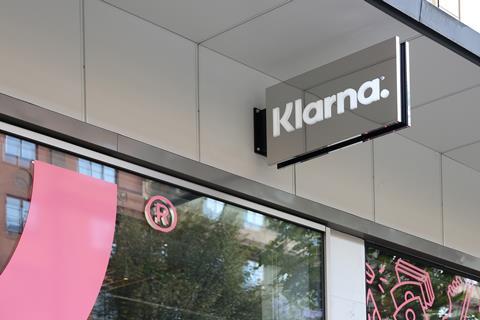
‘Buy now, pay later’ is a trend born of the e-commerce (and particularly mobile commerce) age, but increasingly it’s making its way into physical retail too.
Klarna has been especially active in this area. Last May, it announced it was making its BNPL services available in-store via smartphone technology. Customers paying for goods in-store can now either scan a QR code or receive a payment link via email or SMS, which then takes them through the application and payment process.
In January, the company struck a partnership with point-of-sale software provider Vend, aimed at making it easier for small, independent retailers to offer ‘buy now, pay later’ in their stores as well as in the online sphere.
Klarna has also proved its physical retail chops with several pop-up stores, including two ‘House of Klarna’ events in London and Manchester last year that offered a curated selection of goods from retailers accepting payment through the app.
Still, BNPL has some way to go before it can call itself a true omnichannel proposition, say experts.
While the in-store application process is arguably smoother and easier than applying for traditional store cards or credit, it is nevertheless more convoluted than online, with payment links to be sent and codes to be scanned.
“The whole model started off in the e-commerce world,” says Sameer Pethe, principal at Kearney. “It is now moving offline, to the point of sale in physical stores, but the problem at the moment is that the experience isn’t as slick as it is online.”
One potential way around this can be seen in the US, where BNPL provider Affirm - which counts Walmart among its retailer customers - recently started pushing into physical retail with the launch of a smartphone app that allows shoppers to “pre-qualify their spend” and pay for goods in store using a “one-time-use virtual card”.
The success of this approach remains to be seen, but if BNPL providers can smarten up the in-store customer experience the opportunities could be huge, says Pethe.
“It’s all about cracking how the omnichannel experience would work.”
Still, some experts do see potential for BNPL to make its way into grocery in certain, limited forms. Big seasonal events such as Christmas and Black Friday present one such opportunity, along with premium food and drink products. “In particular, we see it working with either high-value items like wine and spirits or items bought in bulk, like catering for a special occasion,” says Saradha Sethuraman, e-commerce business director at Omnicom’s OMG Transact division.
It’s a view echoed by Novakovic at Fitch. “Those premium, indulgent products are areas where shoppers do want to trade up, and enhanced payment options at that point could be quite interesting,” she says.
There could also be some potential in providing targeted, carefully vetted credit lines to consumers who occasionally struggle to pay for their weekly food shop and might appreciate the option of spreading the cost. “Although the use cases may well be limited, there seems to be a captive market in a consumer segment that is pushed for disposable income,” says Luke Large, senior retail consultant at Capgemini.
It’s a market that Flava, which sells store cupboard essentials on a BNPL basis with no interest and no late fees, caters for. “What is particularly interesting about businesses like Flava is that they do not charge interest or APR on purchases, unlike others,” says Large.
“They could also quite easily claim that it would offer a solution to cash-strapped customers that would impact them far less than going into an overdraft or trying to secure a quick line of credit.”
“We see it working with either high-value items like wine and spirits or items bought in bulk, like catering for a special occasion”
Even so, while there’s a clear market for services like Flava’s, most experts doubt BNPL is a big enough opportunity for large grocery chains. In practice, grocery shoppers also have other ways of managing their spend, adds Jeffers at Accenture. “I would expect them to trade down to own label or switch to a discounter.”
That’s not to say grocers shouldn’t take the trend seriously - not least because the potential of BNPL in grocery cannot be judged solely on today’s shopping behaviour. Just as BNPL led to the rise of ‘try now, pay later’ in fashion, it’s possible instant-credit services could help create new buying behaviours in grocery.
“The fintechs have been very good at thinking of new use cases for credit,” says Pethe at Kearney. One possible new use case is buying groceries on subscription, he believes. Instead of requiring shoppers to pay every time they buy, supermarkets might consider charging a monthly fee based on shoppers’ average spend. “That way, you essentially finance the person’s shop through the month and then they settle the bill at the end.”
Brewer at Oliver Wyman agrees subscription-based buying could be a way for grocers to tap the BNPL mindset. “A model like that would be much more aligned with the modern way of buying, with the Ubers and Airbnbs of this world and the ‘rent not buy’ ethos,” he says. “Of course it’s food, so you have to buy it, but retailers would be simplifying large parts of the experience and moving it much more towards a modern, digital experience.”
As subscription models would need to be underpinned by solid shopper data and insights, there’s also an opportunity to link to loyalty schemes. “Retailers haven’t yet cracked how to use the fact they offer financing and have loyalty programmes,” says Pethe. “In most places, these two are run quite independently and there isn’t a lot of leveraging of data from one to the other. But could putting the two together help you offer a better proposition to the customer?”
The BNPL trend also offers wider lessons on the importance of using technology in payments. “Buy now, pay later is an interesting development from a grocery and wider retail perspective, but not necessarily for the offer of credit itself,” says Andrew Cregan, head of payments policy at the BRC. “Klarna is just one of a number of companies changing the customer experience at checkout. It’s all part of a wider trend.”
With young shoppers being trained to expect super-convenient, frictionless payment, the true lesson of BNPL is that grocery retailers must make payment technology a priority, agrees Novakovic at Fitch. “It’s about how you pay, not how you finance,” she says. “Instead of worrying about BNPL specifically, I wonder if grocery retailers wouldn’t be better off looking at their whole payment process and making it more seamless and more straightforward.”
The main players in buy now, pay later

Klarna
Key retailers: H&M, Asos, Boohoo, Made.com
The poster child of the BNPL boom, Sweden’s Klarna is one of the hottest fintech properties around. Having raised $460m last summer to support its US expansion, the company secured a further $200m in January ahead of its launch in Australia. In the UK, Klarna offers two types of BNPL services - pay 30 days later and pay in instalments - both of which come with zero interest and no fees. It also has a more traditional credit option, which allows shoppers to pay for goods over six to 36 months.
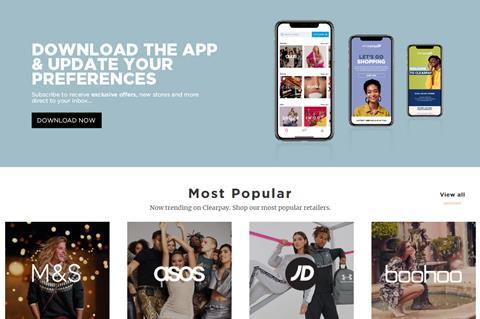
Clearpay
Key retailers: M&S, Asos, Urban Outfitters, JD Sports, Anthropologie
Clearpay scored a major win last autumn when M&S announced it would start offering it as a payment option on fashion and homeware. Shoppers can use Clearpay to split the cost of purchases over four instalments due every two weeks, with the first due at the point of purchase. There’s no interest, but consumers do incur charges if they miss payments. Originally part of ThinkSmart, Clearpay was acquired by Australia’s Afterpay Touch Group in August 2018.

Laybuy
Key retailers: WH Smith, Maplin, Footasylum, JD Sports
New Zealand’s Laybuy went live in the UK in March 2019, having scored a partnership with Footasylum. The payment app has rapidly signed up more retailers since.
The service allows online as well as in-store shoppers to split the cost of purchase over weekly instalments at no interest, though there are fees for late payments. It also offers a ‘boost’ option, which enables shoppers to pay more upfront if their credit limit doesn’t cover the cost of the item they want to buy.

PayPal Credit
Key retailers: Game, Goldsmiths, Hughes, Millets
Closer to a traditional credit card than other providers on this list, PayPal’s online financing product nevertheless tends to be grouped in the BNPL trend because of its convenient ‘buy now, pay later’ option. It offers 0% financing over four months on any purchases over £99 as well as payment by instalments over as many as 24 months at special promotional rates in partnership with retailers such as Game. Customers’ credit limits are linked to their PayPal accounts.

PayL8r
Key retailers: small independent brands and retailers
Manchester-based PayL8r describes itself as “the leading finance provider for the beauty and aesthetic industry”, offering BNPL on anything from Botox to hair extensions. It also counts several training providers, travel companies and tattoo studios among its partner merchants. Shoppers can defer the full payment for 30 days at 0% interest or pay in instalments at varying interest rates. There’s also an option that allows retailers to offer PayL8r in-store via a payment link.
Meet the online grocer allowing punters to buy now, pay later
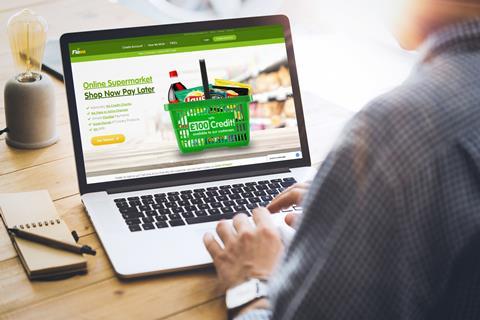
“Stock up your cupboards with those monthly essentials every home needs and have the peace of mind you’ve got it sorted.”
This is the pitch made by Flava, a new online grocery retailer that allows customers to buy food and household items, and spread the cost over a month at no interest.
Launched last August by entrepreneur Dan Cluderay, who previously set up Approved Food, Flava sells between 500 and 600 Booker-supplied lines, roughly 90% of which are price-marked. This January it had 1,500 orders, having secured consistent growth since launch.
There’s clear demand for buy now, pay later from a wide range of customers, says Cluderay. “It’s been really interesting to see the diversity of the product range we sell,” he says. “We sell your typical shop but also quite a lot of niche items to do with baking, garlic granules, herbs & spices and things like that.”
Bulk orders of petfood and household item such as toilet paper are also part of the picture, he adds.
Flava doesn’t use third-party BNPL services but handles customer accounts itself. This gives it much-needed flexibility in how it provides credit and responds if customers struggle to make payments, says Cluderay.
“The easiest thing in the world to do is to plug in one of those services, but I don’t think that sits right with food and drink,” he says. “If a customer has problems, it just feels like there could be negative connotations that could be pulled back to the retailer.”
To gauge whether punters can afford their shop, Flava has a credit limit of £40 for new accounts and requires customers to make one successful payment of £10 before their order is processed.
If customers miss subsequent payments, Flava doesn’t impose fees and instead tries to work out a solution with the customer. It’s all part of making sure shoppers keep coming back, says Cluderay, though he admits this approach could leave his business vulnerable to exploitation.
“We will have people who, rather than can’t pay, won’t pay, so that is an element of risk,” he says. “That’s what the cost of business is. But we’re not going to be taking people to court over £30, and so far we’ve had very few problems.”

Julia frequently appears on radio and TV as a commentator on grocery retail and the politics of food and food sourcing, and has worked extensively on food authenticity and fraud issues. In 2013, she headed up The Grocer’s coverage of the horsemeat scandal.
Prior to joining The Grocer in 2010, Julia was editor of New Media Markets, a trade publication for the TV industry. She started her career as a staff writer for The Legal 500 at publisher Legalease. @juliaglotzView full Profile







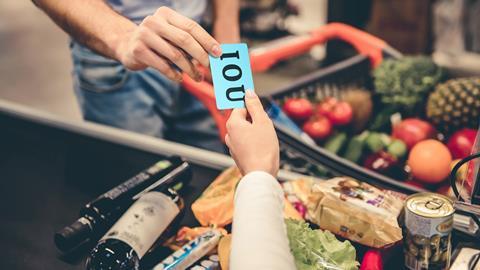









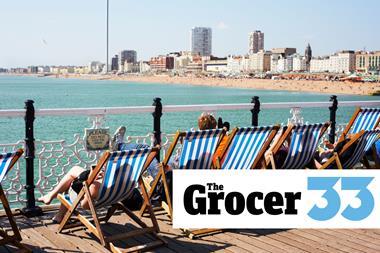






No comments yet